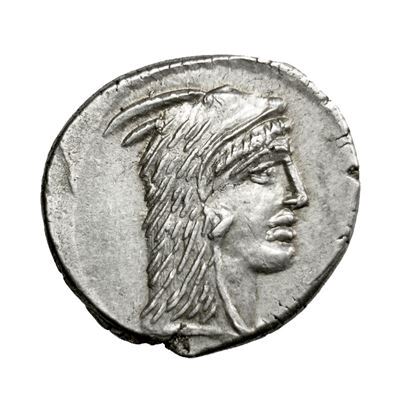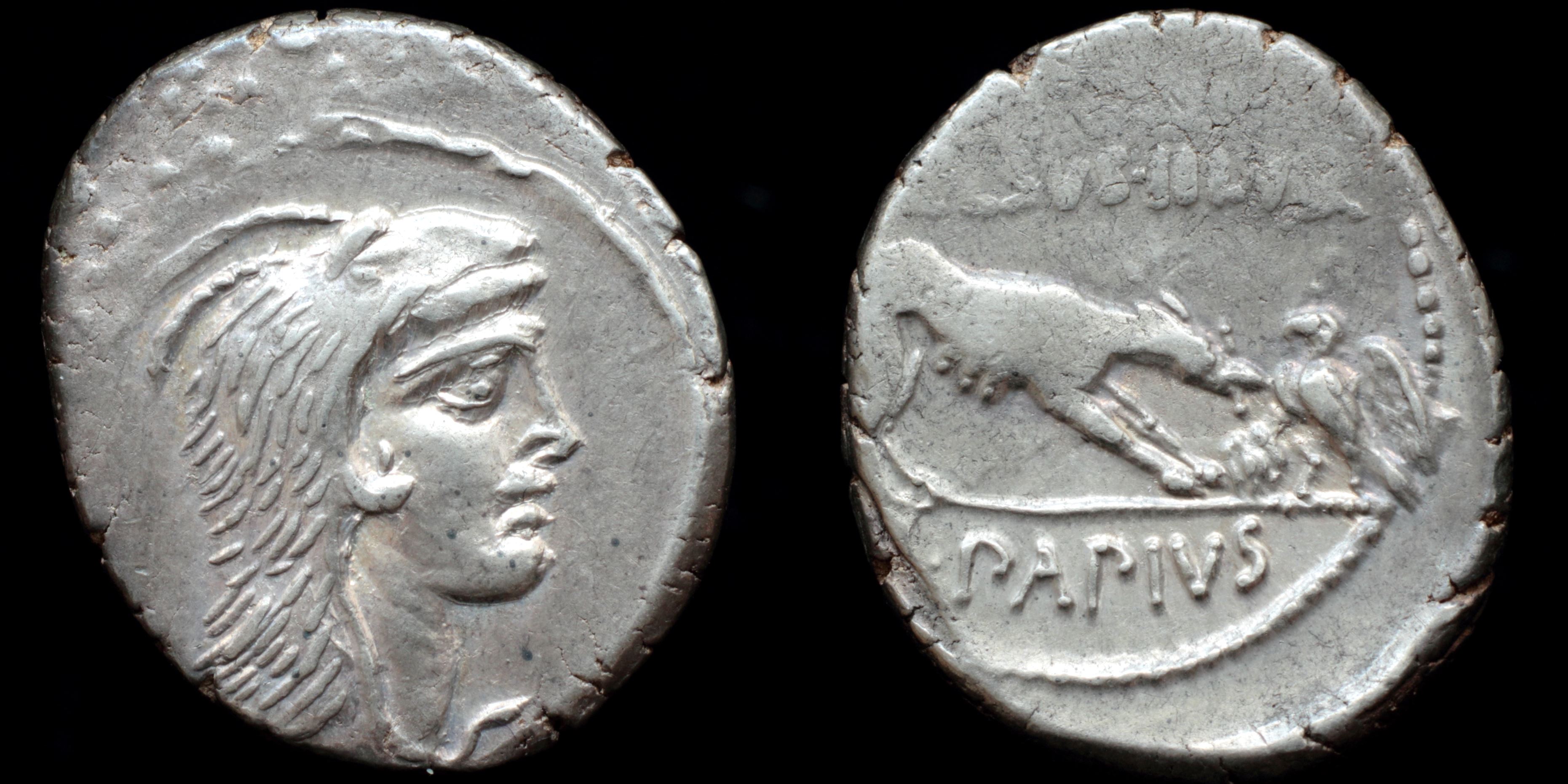L. Papius Celsus was one of the moneyers for the year 45 BC. He is not otherwise known, but is possibly the son of the L. Papius who was moneyer in 79 BC.
Gens Papia was a plebeian family at Rome. Members of this gens are first mentioned at the time of the Samnite Wars, but do not appear at Rome until the final century of the Republic. Marcus Papius Mutilus was the only member of the family to attain the consulship, which he held in AD 9.
The cognomen Celsus would have been given to someone who was conspicuously tall.
Gens Papia was a plebeian family at Rome. Members of this gens are first mentioned at the time of the Samnite Wars, but do not appear at Rome until the final century of the Republic. Marcus Papius Mutilus was the only member of the family to attain the consulship, which he held in AD 9.
The cognomen Celsus would have been given to someone who was conspicuously tall.

(1)
L. Papius Celsus

Obverse: head of Juno Sospita right wearing goat skin
Reverse: wolf right placing stick on fire, eagle left fanning flames with its wings, CELSVS·III·VIR / L.PAPIVS
Diameter:
18.5 mm
Die Orientation: -
Weight: 3.9 g
Die Orientation: -
Weight: 3.9 g
Reverse depicts a founder myth from Lanuvium.
"While Lavinium was building, the following omens are said to have appeared to the Trojans. When a fire broke out spontaneously in the forest, a wolf, they say, brought some dry wood in his mouth and threw it upon the fire, and an eagle, flying thither, fanned the flame with the motion of his wings. But working in opposition to these, a fox, after wetting his tail in the river, endeavoured to beat out the flames; and now those that were kindling it would prevail, and now the fox that was trying to put it out. But at last the two former got the upper hand, and the other went away, unable to do anything further. Aeneas, on observing this, said that the colony would become illustrious and an object of wonder and would gain the greatest renown, but that as it increased it would be envied by its neighbours and prove grievous to them; nevertheless, it would overcome its adversaries, the good fortune that it had received from Heaven being more powerful than the envy of men that would oppose it. These very clear indications are said to have been given of what was to happen to the city; of which there are monuments now standing in the forum of the Lavinians, in the form of bronze images of the animals, which have been preserved for a very long time.
...
This myth according to Dionysios occured not in Lanuvium but in Lavinium. And there too the group depicting the myth should have been found. This localisation seems to be an error of the author. On the obv. of this coin appears Juno Sospita. the main centre of her worshipping was Lanuvium, not Lavinium. The allusion to this myth at Horace (Hor. epod. 3, 27, 4) appears directly after the mention of Lanuvium. The confusion of these two sites is not astonishing. Lanuvium and Lavinium were swapped very often and in important documents too like the Fasti. The strong connection with Aeneas in this story of Dionysios can be explained as addition of the author who doesn't miss the chance to beautify the myth. Dionysios ascribes an old age to the myth but this can't be looked at as reliable. But rather a group of statues whose meaning has been lost may be the reason of this aetiological myth (Krumme)." - Jochen's Coins of mythological interest
Crawford 472/1, RSC I Papia 2
